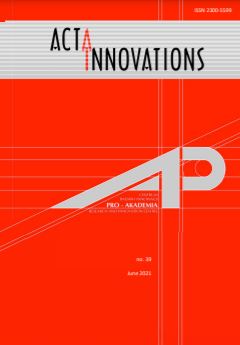FORMATION OF AN INTEGRATED STRUCTURAL ASSESSMENT OF THE EXPORT POTENTIAL OF THE AVIATION COMPLEX
FORMATION OF AN INTEGRATED STRUCTURAL ASSESSMENT OF THE EXPORT POTENTIAL OF THE AVIATION COMPLEX
Author(s): Kateryna Andriushchenko, Ganna Gurina, Elvira Danilova, Viktoriia Zalizniuk, Oleg Platonov, Vitalii TkachukSubject(s): International relations/trade, Methodology and research technology, Evaluation research, Economic development
Published by: Centrum Badań i Innowacji Pro-Akademia
Keywords: aviation enterprises;integrated structural assessment;export potential;aviation complex;export-import flows;international competitive strategy; competitive advantages;risks;foreign economic relations;
Summary/Abstract: Successful operation and development of enterprises in modern conditions involves the expansion of markets. The company's entry into international markets requires the formation of its international competitive strategy, identification of competitive advantages in the markets of selected countries, and this, in turn, implies the need for export potential of the company. In determining the export potential of the aviation complex, it is necessary to consider the specific features of enterprises in this industry, among which we can highlight the features of the products of aviation enterprises and the features of the international aviation market. To qualitatively assess the level of economic potential, we propose to use a system of classification features, developed based on the well-known Harrington scale, but slightly modified by the authors in relation to the calculated data and available statistical information. The phases of the life cycle of the economic potential of the enterprise are determined. Not only the quantitative and qualitative level of economic potential are important, but also the changes associated with the passage of time. In order to determine the importance of indicators in each group, methods of component analysis of the characteristics of variation series of the results of the survey of experts were used. When comparing the variation of different features in one set with different average value, we use the relative indicators of variation - coefficients of variation. The obtained result together with the results of application of the method of component analysis allows us to conclude that in the formation of the integrated indicator of the first group (K1) it is enough to consider these five indicators, and the most important of them are two: technological processes to other activities.
Journal: Acta Innovations
- Issue Year: 2021
- Issue No: 39
- Page Range: 41-53
- Page Count: 13
- Language: English

